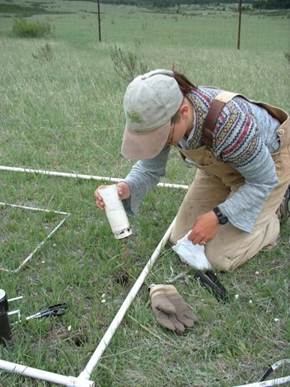Seasonal effects of defoliation on montane rough fescue ( Festuca campestris Rydb.)
Montane rough fescue (Festuca campestris Rydb.) grasslands were historically grazed in winter, but changes in migratory behavior of elk (Cervus elaphus) may lead to year-long grazing. I describe spatio-temporal patterns in nutrient return on a fescue grassland at the Ya-Ha-Tinda ranch, responses of grassland plants and soils to seasonal defoliation, and fescue plant responses to nitrogen-form and defoliation. Elk pellet group distribution shifted seasonally and was associated with site productivity, rough fescue, topography, and vegetation cover. In a 2-year field experiment, aboveground carbon and nitrogen pools at the community level responded to changes in seasonal defoliation while root biomass and soil N did not change. A greenhouse experiment showed that declines in rough fescue under high nitrogen availability and defoliation result from decreased tillering and root growth, not increased mortality. I discuss my research results in light of changing migratory patterns of elk and the sustainability of elk-fescue grasslands.